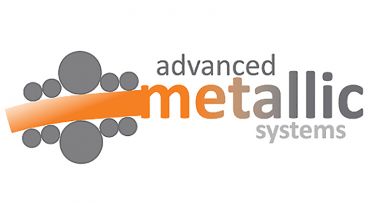Developing High Co-Containing Ni-Based Superalloys With Improved Oxidation Behaviour For Future Jet-Engine Applications
Improving jet engine efficiency for increased sustainability in the aerospace industry by developing a new generation of Ni-based superalloys

The aerospace industry accounted for 2% of total CO2 emissions in 2022, with a growing commitment to achieving carbon neutrality by 2055. Increasing engine efficiency can be achieved by increasing the operating temperatures of jet engines, requiring a new generation of Ni-based superalloys with improved high-temperature performance. At temperatures as high as 800°C, turbine disc alloys will oxidise, which can result in material degradation. Through compositional and heat treatment modifications, it may be possible to increase oxidation resistance, which can lead to a decrease in carbon emissions, fuel consumption, and noise levels in turbine engines.
Ni-based superalloys are used in jet engines due to their high-temperature capabilities. Turbine discs located within the turbine compressor of the jet engine can experience temperatures of around 800°C, with the possibility of jet engine operational temperatures increasing. Therefore, a new generation of Ni-based superalloys will be required to achieve the goals set out by Flightpath 2050 and the Paris Agreement.
Co-based superalloys show high temperature performance, however they can form unwanted phases. By combining Ni and Co systems, this project studied the oxidation resistance of high Co-containing Ni-based superalloys. Three alloys have been studied with varying Ti:Ta content, to investigate the effects of the co-additions at 800°C.
Thermo-gravimetric analysis was conducted to measure mass gain and the oxidation coefficients while the alloys are heated at 800°C for 100 hours. Scanning electron microscopy with energy dispersive X-ray spectroscopy (SEM-EDX) was used to look at the diffusion of elements within the bulk of the alloys, and what the chemical composition of the oxide scale is. Atom probe tomography was used to measure the concentration of all the elements in the different phases to determine if any variations are contributing to oxidation behaviour. EPMA with a higher resolution than SEM-EDX, shed more light on the microstructure and oxidation behaviour of these alloys. In-situ XRD was used to investigate the effect of increasing temperature and Ti:Ta content on mechanical performance.
My PhD project has provided me with the opportunities to get trained on state-of-the-art equipment, collaborate with academics from different universities, and allowed me to share my work internationally at different conferences. From planning an experiment, to conducting it, analysing and applying meaning to your results which relate back to your research question is a satisfying process.
Frances Synnott
Quote attribution...
Equipment Used:
SEM-EDX and EBSD at the Sorby Centre, University of Sheffield
EPMA in the University of Manchester through the Royce student access scheme,
Atom probe tomography in NTNU Norwegian University of Science and Technology,
XRD at Diamond Lightsource and ESRF*.
VIM in Royce Discovery Centre, University of Sheffield.
Proposed; Atomiser and HIP at Royce Translational Centre, University of Sheffield, TGA in Cambridge.
* = This data was collected before Frances’s PhD but she is analysing it.

Study with us
Study for a fully-funded PhD or EngD in Advanced Metallic Systems to explore innovative materials and manufacturing routes to increase sustainability and performance.

